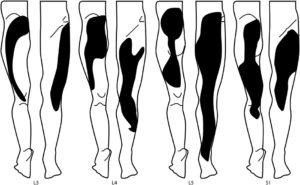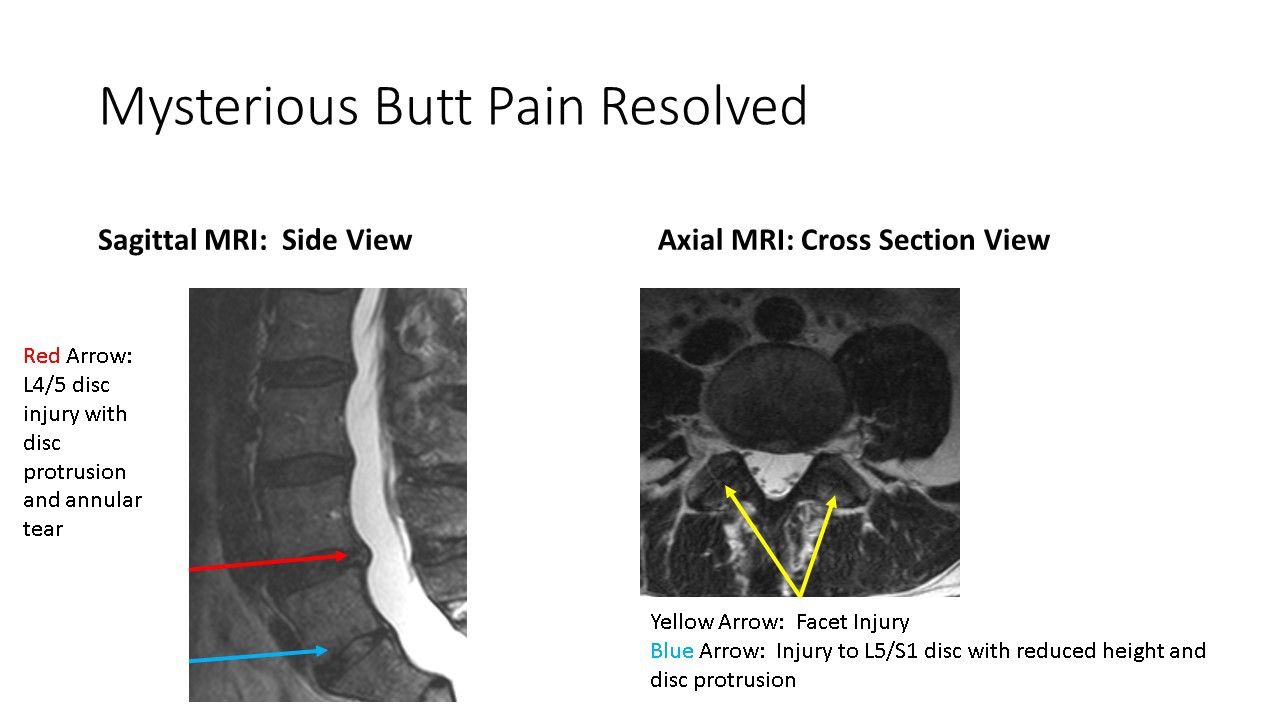If you tend to push yourself on weekends, Monday can be a challenge. Muscle fatigue, stiffness, and restriction in range of motion can be a problem. Typically, these resolve by late Monday afternoon. Unfortunately, this is not always the case. This story is about a buttock pain
Patient with Butt Pain After Weekend Cycling Competition
Meet ML, a 50-year-old avid athlete, ex-national kayak team member, and cyclocross enthusiast, who presented with a debilitating history of left gluteal pain. The onset occurred after a weekend competition and was so severe that he went to the emergency room. The pain was localized deep in the gluteal region with radiations down the iliotibial (IT) band (which is located along the outer thigh and knee), was sharp and pinching in character, and was aggravated by sit-ups. Treatment to date had included stretching, heat, ice, and physical therapy, all of which had provided no significant benefit. Unfortunately, ML resides in Wisconsin, which is an HMO mecca, and, therefore, he was denied any radiographic imaging as his providers felt that the symptoms were muscular in nature and would resolve with conservative care.

What Is Referred Pain?
Pain can arise from a local injury (pain at the site of injury), but it can also be referred from a different source. Referred pain is pain that is perceived at a location other than the site of injury or tissue trauma. A classic example of referred pain is the arm pain experienced by someone who is having a heart attack. The tissue injury is in the heart, but the pain is perceived in the arm. So mystery solved, the buttock pain is referred pain.
Lumbar Disc Referral Patterns
Bogduk and others have demonstrated referral patterns for each lumbar disc and nerve as demonstrated below. The referral patterns all involve pain in the gluteal and posterior thigh.

Lumbar MRI Reveals Reason for Mysterious Buttock Pain
MT was tired of the many excuses set forth by his providers and paid for a lumbar MRI, which is displayed below.

ML has a two-level lumbar disc injury. The L4/5 disc, identified by the red arrow, has reduction in height, disc protrusion, and a tear in the annulus. The L5/S1 disc, identified by the blue arrow, has significant reduction in height with disc protrusion. The facet joints, identified by the yellow arrows, are arthritic.
ML’s Treatment with Injections of Orthobiologics
Before he made his way to us, ML had been offered steroids, which he thankfully declined acknowledging the significant adverse effects. Instead he opted for a comprehensive treatment plan that addressed the spine as a functional unit. He underwent X-ray–guided epidural injections with platelet lysate, facet injections with super-concentrated platelets, and injections of spinal ligaments and multifidus muscles under MSK ultrasound with platelets.
To learn more about the advantages of platelet lystate, please click below.
How Did He fare?
Two months post injection followed by core rehabilitation, ML is back in the saddle pushing the limits.

If you have ongoing gluteal pain that has been refractory to conservative care, consider an evaluation at the Centeno-Schultz Clinic, where you will have a one-hour evaluation with a board-certified, fellowship-trained physician who will review your symptoms, detail events leading up to the injury, review MRI imaging, and perform an extensive physical examination. Anything less will compromise your clinical outcome and your ability to get back in the saddle.
